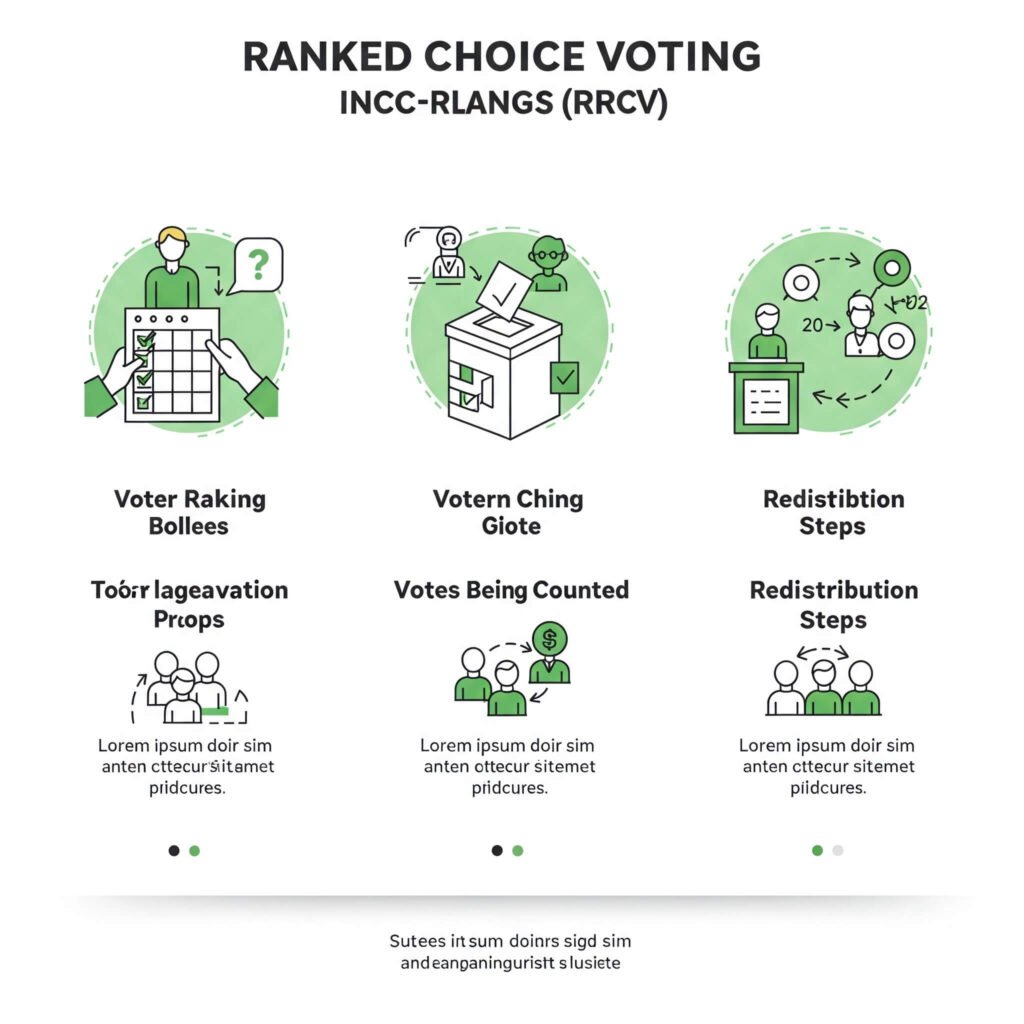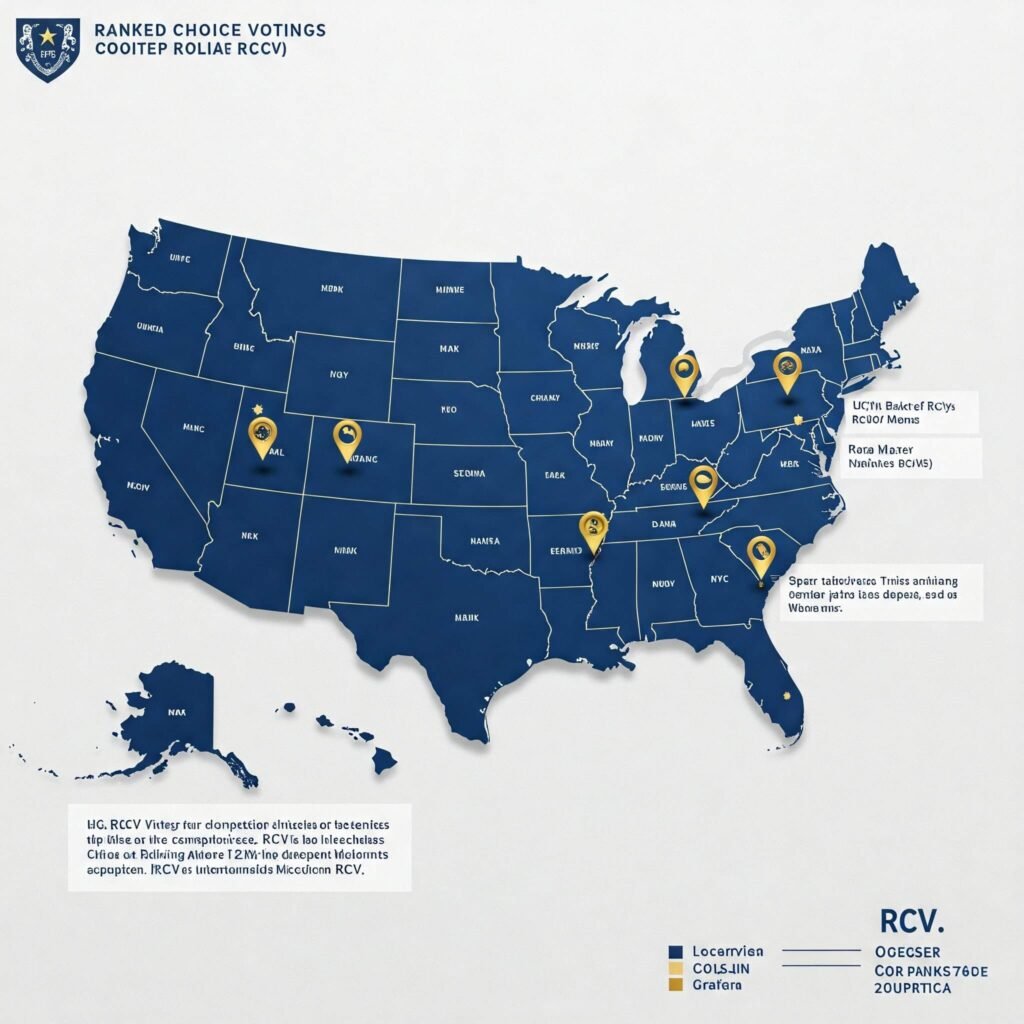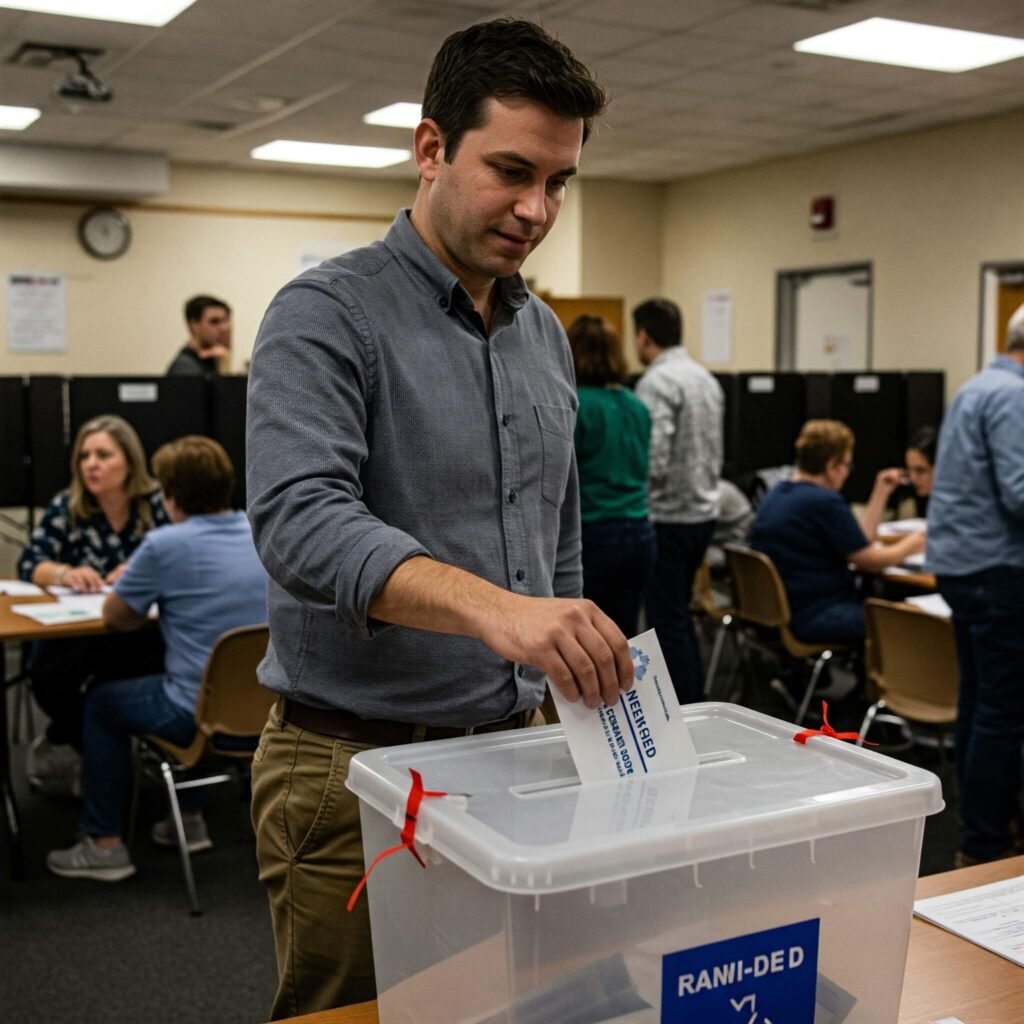Ranked-choice voting (RCV) is revolutionizing elections by offering a fairer, more inclusive system. As the 2025 elections approach, many wonder whether this method could reshape our democracy. In this post, we’ll explain what RCV is, how it functions, its benefits and challenges, and its potential role in 2025. Let’s dive in!
What Is Ranked-Choice Voting?
Ranked-choice voting, also known as instant-runoff voting, allows voters to rank candidates by preference instead of selecting one. For example, if no candidate wins a majority, the candidate with the fewest votes is eliminated, and their votes are redistributed based on voters’ next choices. Consequently, this process continues until a winner emerges.
Moreover, this system ensures elected officials have broader support, reducing the “spoiler effect.” For instance, Maine has implemented RCV for state and federal elections since 2018, demonstrating its practical impact.
Why RCV Matters for Elections
Importantly, RCV encourages candidates to appeal to a wider audience, which reduces negative campaigning. Therefore, it could be a game-changer for the 2025 elections, especially in polarized races.

How Does Ranked-Choice Voting Work?
Fortunately, RCV is simpler than it sounds. Here’s a step-by-step guide:
- Rank Candidates: Voters list candidates in order (e.g., 1st, 2nd, 3rd).
- Count First Choices: Initially, votes are tallied based on top preferences.
- Check for Majority: If a candidate has over 50% of first-choice votes, they win.
- Eliminate and Redistribute: Otherwise, the lowest vote-getter is eliminated, and their votes go to the next-ranked candidate.
- Repeat Until a Winner: Finally, this continues until a majority winner is determined.
For a deeper understanding, check out FairVote’s guide on RCV.
Example: Maine’s 2018 Election
For example, in Maine’s 2018 congressional race, no candidate secured a majority in the first round. As a result, RCV redistributed votes, and the candidate with broader support won. This clearly shows how RCV reflects voter preferences.
Benefits of RCV for 2025 Elections
Additionally, RCV offers several advantages that could transform the 2025 elections:
- Reduces Polarization: For instance, candidates must appeal to second- and third-choice voters, fostering civility.
- Eliminates Spoilers: Similarly, third-party candidates can run without splitting votes, as seen in New York City’s 2021 mayoral race.
- Boosts Voter Choice: Moreover, voters can support their true favorite without “wasting” their vote.
- Ensures Majority Support: Consequently, winners need broad approval, leading to fairer outcomes.
According to FairVote, RCV often increases voter turnout and satisfaction, which could boost engagement in 2025.

Challenges of Adopting Ranked-Choice Voting
However, despite its benefits, RCV faces hurdles:
- Voter Education: For example, ranking can confuse some voters, requiring clear communication.
- Implementation Costs: Additionally, updating voting systems and training officials can be costly.
- Resistance to Change: Lastly, traditional voting is entrenched, and some resist reform.
Nevertheless, Alaska’s successful adoption proves these challenges can be overcome with effort.
Overcoming Barriers for 2025
To prepare for 2025, states considering RCV should invest in voter education. Furthermore, pilot programs can help. By engaging communities early, officials can build trust and ease the transition.
Will RCV Influence the 2025 Elections?
As of April 2025, RCV is used in jurisdictions like Maine, Alaska, and several cities. Meanwhile, states like Nevada and Oregon are exploring it, according to Ballotpedia. If adoption grows, RCV could:
- Promote Fair Outcomes: For instance, majority support reduces contested results.
- Encourage Diverse Candidates: Similarly, underrepresented groups may have better chances.
- Ease Partisan Gridlock: As a result, broader preferences could lead to less polarized leaders.
Although RCV may not dominate nationwide by 2025, its use in key areas could spark broader reform.

Actionable Steps for Voters
Ready to support RCV in 2025? Here’s how:
- Educate Yourself: First, visit FairVote.org to learn about RCV’s impact.
- Advocate: Next, urge local officials to consider RCV adoption.
- Stay Updated: Additionally, follow election reform news for RCV developments.
- Vote Smart: Finally, if RCV is used locally, rank candidates thoughtfully.
Conclusion
In conclusion, ranked-choice voting could make the 2025 elections more inclusive and less divisive. By giving voters more choice and ensuring winners have broad support, RCV promotes a fairer democracy. Although challenges remain, its growing adoption is promising. Will it define 2025? Only time will tell, but it’s a step forward.
What are your thoughts on RCV? Share below, and let’s discuss!

